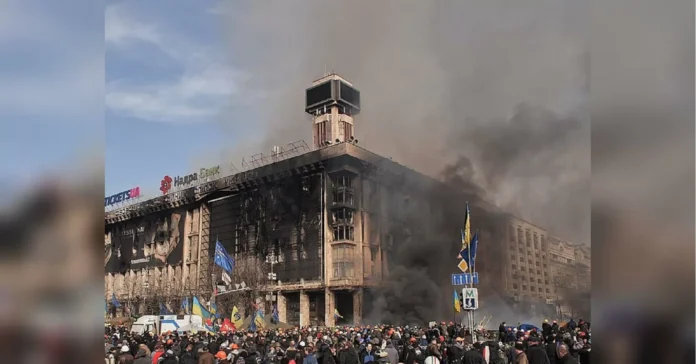In January 2014, he went out to negotiate with protesters.
In January 2014, the streets of Kiev, Ukraine were filled with protesters demanding change. The country was in the midst of a political crisis, with citizens calling for the resignation of President Viktor Yanukovych. Amidst the chaos and tension, one man stood out for his bravery and determination to find a peaceful resolution – he was none other than Arseniy Yatsenyuk.
Yatsenyuk, a prominent Ukrainian politician and former Prime Minister, had been a vocal critic of Yanukovych’s government and its policies. He had been a key figure in the opposition movement and had been actively involved in organizing and leading protests. As the situation in Kiev escalated, Yatsenyuk knew that it was time to take action and try to find a way to end the crisis.
On January 28, 2014, Yatsenyuk made the bold decision to go out and meet with the protesters who had been camped out in Independence Square for weeks. He knew that this was a risky move, as tensions were high and violence could erupt at any moment. But he also knew that it was necessary to engage in dialogue with the protesters and try to find a peaceful solution.
As he made his way through the crowds, Yatsenyuk was met with cheers and applause. The protesters saw him as a symbol of hope and a leader who was willing to stand up for their rights. Yatsenyuk addressed the crowd, urging them to remain peaceful and promising to do everything in his power to bring about change.
He then proceeded to meet with representatives of the opposition movement, including Vitali Klitschko and Oleh Tyahnybok. Together, they discussed their demands and strategies for negotiating with the government. Yatsenyuk also reached out to Yanukovych’s administration, requesting a meeting to discuss the protesters’ demands.
Despite facing criticism and backlash from some members of the opposition movement, Yatsenyuk remained steadfast in his efforts to find a peaceful resolution. He continued to attend meetings and negotiations, even when they seemed to be going nowhere. He also used his platform to call for international support and pressure on the Ukrainian government to listen to the demands of the people.
Finally, after months of protests and negotiations, Yanukovych agreed to step down and call for early elections. This was a major victory for the opposition movement and a testament to Yatsenyuk’s determination and leadership. He had played a crucial role in bringing about change and ensuring that the voices of the people were heard.
Yatsenyuk’s actions in January 2014 were a true display of courage and determination. He risked his own safety to engage in dialogue with protesters and work towards a peaceful resolution. His leadership and dedication to the cause were instrumental in bringing about change in Ukraine.
Today, Yatsenyuk continues to be a prominent figure in Ukrainian politics, advocating for democracy and human rights. He remains a symbol of hope for many and a reminder that one person can make a difference. His actions in January 2014 will always be remembered as a pivotal moment in Ukraine’s history, when a leader stepped up to negotiate with protesters and bring about change.

